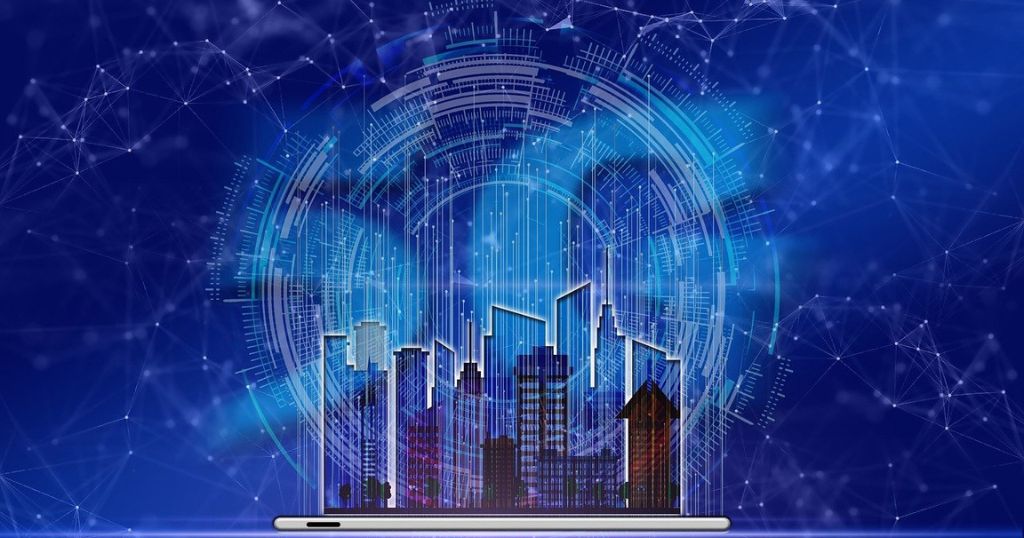In today’s fast-paced world, Mind-Blowing Technologies are transforming our lives in ways we never imagined. These groundbreaking innovations are not only changing how we live and work but also opening up new possibilities for the future. From advanced artificial intelligence to revolutionary medical breakthroughs, Mind-Blowing technology is pushing the boundaries of what we thought was possible.
1 Artificial Intelligence (AI)

Artificial Intelligence (AI) is a technology that enables machines to think and learn in ways similar to humans. It helps computers solve problems, understand speech, and even recognize images. AI is making our lives easier by powering smart devices and improving many industries.
Applications of AI in everyday life
Artificial Intelligence (AI) is a powerful technology that is becoming a part of our daily lives. We use AI when we talk to virtual assistants like Siri or Alexa, which help us with tasks and answer our questions. AI also helps us when we shop online by recommending products we might like. Even our cars use AI for navigation and safety features. These are just a few examples of how AI is making our everyday life easier and more convenient.
Future Prospects of AI
The future of Artificial Intelligence (AI) is full of exciting possibilities. In the coming years, AI is expected to become even more advanced and helpful. It could transform healthcare by diagnosing diseases earlier and developing new treatments. In education, AI could personalize learning for each student, making it more effective and fun. Smart cities powered by AI could improve traffic flow and reduce energy use. The potential of AI is vast, and as it continues to grow, it will bring many positive changes to our world.
2 Quantum Computing
Quantum computing is a new type of computing that uses the power of tiny particles to perform calculations much faster than traditional computers. It can solve complex problems quickly, which can help in science, medicine, and technology.

Potential impact on various industries
Quantum computing could revolutionize numerous industries. In healthcare, it could help design new drugs faster and more accurately. In finance, quantum computers can optimize investment strategies and detect fraud quickly. The energy sector could benefit by finding better ways to produce and store energy. In manufacturing, quantum computing can improve product designs and streamline supply chains.
Current advancements and future possibilities
Quantum computing is making big strides with its current advancements. Today, these powerful computers can solve complex problems much faster than regular computers. They are helping researchers in fields like chemistry and physics discover new things. Looking ahead, the future possibilities of quantum computing are incredible. It could revolutionize industries by optimizing supply chains, creating more secure communication systems, and advancing artificial intelligence.
3 5G Technology
5G technology is the latest generation of mobile networks, offering much faster speeds and more reliable connections than previous generations. It allows for smoother streaming, quicker downloads, and better support for smart devices. With 5G, we can expect improvements in everything from virtual reality to smart cities.

Benefits and applications
5G technology brings many benefits and exciting applications. It offers much faster internet speeds, allowing for quicker downloads and smooth streaming of high-quality videos. This speed also improves the performance of online games and virtual reality experiences. Additionally, 5G enables more reliable connections for smart devices, which helps in creating smarter homes and cities. With 5G, industries like healthcare and transportation can use advanced technologies for better services and efficiency.
How 5G is transforming communication
5G technology is changing the way we communicate by offering much faster and more reliable connections. With 5G, we can make video calls with clearer images and no lag, making virtual meetings more effective. It also supports a greater number of devices at once, so smart gadgets and connected devices can work together seamlessly. This technology improves the speed of internet access, which helps in streaming high-definition videos and playing online games smoothly.
Must Read:How Technology Changed the Gaming Industry: A Deep Dive
4 Blockchain Technology
Blockchain technology is a way to securely record and share information. It works like a digital ledger where each transaction is stored in a “block” and linked to the previous one, creating a “chain” of information. This makes it very hard to change or tamper with the data, ensuring that records are accurate and trustworthy.

Use cases beyond Blockchain Technology
Beyond cryptocurrencies, blockchain technology has many useful applications. For example, it can improve supply chain management by tracking goods from production to delivery, ensuring they are genuine and not tampered with. In healthcare, blockchain can securely store patient records, making it easier for doctors to access accurate information. It is also used in voting systems to prevent fraud and ensure votes are counted correctly. These use cases show how blockchain can enhance security and transparency in various fields.
How blockchain is reshaping industries
Blockchain technology is reshaping many industries by making processes more secure and transparent. In finance, it helps prevent fraud and ensures that transactions are recorded accurately. In supply chains, blockchain tracks products from start to finish, reducing counterfeiting and errors. In healthcare, it securely manages patient data, improving access and privacy. Additionally, blockchain is revolutionizing real estate by simplifying property transactions and reducing paperwork.
5 Internet of Things (IoT)
The Internet of Things (IoT) is a network of everyday objects connected to the internet, allowing them to send and receive data. This means devices like smart thermostats, refrigerators, and fitness trackers can communicate with each other and us. For example, a smart thermostat can adjust your home’s temperature based on your preferences and usage patterns.

How IoT is transforming homes and cities
The Internet of Things (IoT) is changing how we live in our homes and cities. In homes, IoT devices like smart thermostats, lights, and security systems make everyday tasks easier and more efficient. For example, you can control your home’s temperature or lighting with your phone, even when you’re away. In cities, IoT helps manage traffic, monitor air quality, and improve public services. Smart traffic lights can reduce congestion, and sensors can track pollution levels, helping to create cleaner and more efficient urban environments.
Security and privacy issues IoT
The Internet of Things (IoT) brings great convenience but it also raises security and privacy concerns. Since many devices are connected to the internet, they can be vulnerable to hacking. For example, if a smart home security system is not properly secured, hackers might gain access to personal information or control the system. Additionally, IoT devices often collect a lot of personal data, which can be misused if not protected properly. Ensuring strong security measures and privacy protections is essential to keep our data safe and our devices secure.
6 Autonomous Vehicles
Autonomous vehicles are self-driving cars that use technology to navigate and operate without human intervention. They rely on sensors and software to detect their surroundings, making driving safer and more efficient. These vehicles have the potential to reduce accidents and change how we travel in the future.

The current state of self-driving car technology
Self-driving car technology is rapidly advancing, but it is still in development. Today, many cars have advanced driver-assistance features like automatic braking and lane-keeping. Fully autonomous vehicles can drive themselves without human input, but they are not yet common on the roads. Companies are working hard to improve their safety and reliability, aiming for a future where self-driving cars are a normal part of everyday life.
Potential benefits and challenges
Autonomous vehicles offer many benefits, such as reducing traffic accidents caused by human error and making transportation more accessible for people who cannot drive. They can also improve traffic flow and reduce congestion. However, there are challenges to overcome, including ensuring the technology is completely safe and dealing with legal and ethical issues. Additionally, the cost of developing and implementing self-driving cars can be high. Balancing these benefits and challenges will be key to the future success of autonomous vehicles.
7 Nanotechnology
Nanotechnology is the science of working with extremely tiny materials, much smaller than human hair. By manipulating these tiny particles, scientists can create new materials and devices with special properties. Nanotechnology is used in various fields, including medicine, where it helps deliver drugs more precisely, and electronics, where it improves the performance of devices.
Current and potential applications in medicine, electronics, and materials
Nanotechnology is making a big impact in medicine, electronics, and materials. In medicine, it helps deliver drugs directly to specific cells, improving treatment and reducing side effects. In electronics, nanotechnology enhances the performance of gadgets by making them smaller and more efficient. Materials, it creates stronger and lighter materials with special properties, like self-cleaning surfaces. These current applications show how nanotechnology is already improving various fields and suggest exciting possibilities for future innovations.
Future prospects
The future of nanotechnology looks very promising. Scientists are exploring new ways to use tiny particles to create advanced materials that could be stronger, lighter, and more flexible. In medicine, future breakthroughs might lead to even better treatments and early detection of diseases. Nanotechnology could also lead to smarter electronics with faster speeds and lower energy use. As research continues, nanotechnology has the potential to bring significant improvements to many areas of our lives, making everyday products more effective and innovative.
Conclusion
Mind-blowing Technologies are changing the way we live and work in amazing ways. From smart devices and self-driving cars to advanced medical treatments and tiny nanotechnology, these innovations are making our lives easier and more exciting. As technology continues to advance, we can look forward to even more incredible developments that will shape our future and improve the world around us. Embracing these technologies can lead to a brighter and more connected world.
FAQS
What are some mind-blowing facts related to technology?
Some mind-blowing facts about technology include the ability of supercomputers to perform billions of calculations per second and the use of AI to create art and music. These advancements show just how far technology has come and its amazing potential.
What is the most mind-blowing technology in the world?
The most mind-blowing technology in the world is often considered to be artificial intelligence (AI), as it can learn, adapt, and perform tasks that were once thought to be possible only for humans. AI’s ability to process vast amounts of data and make decisions is truly extraordinary.
What technology holds the most promise for the future?
The most promising technology for the future is quantum computing, as it has the potential to solve complex problems much faster than current computers. This could lead to breakthroughs in areas like medicine, finance, and artificial intelligence.







